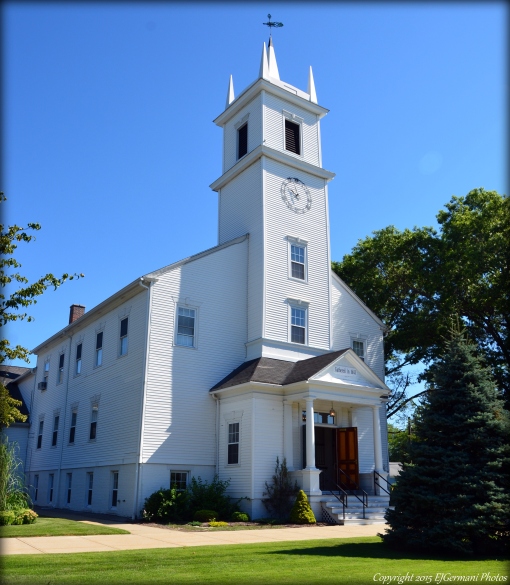Rumford – East Providence
- Rumford Historic Walk
- Newman Avenue, East Providence, RI
- Trailhead: 41°50’27.7″N 71°21’01.3″W
- Last Time Hiked: October 16, 2016
- Approximate distance hiked: 1.0 miles
- Easy.
The northern end of East Providence, known as Rumford, is part Blackstone River Valley National Historic Park. In 1636 Roger Williams passed through this area before being told he was still within the boundaries of Massachusetts. He went on across the river to settle Providence. A few years later Reverend Samuel Newman settled here establishing a village that would one day become what is now known as Rumford. For this walk, park at the parking area directly across the street from the Newman Congregational Church. The building that stands today was built in 1810 and is the fourth meetinghouse built on this site. After taking a look at the structure make your way into the cemetery. The oldest grave here is from 1658, that of William Carpenter. The towns most prominent settlers are buried here and there are over 100 American Revolution veterans as well. The most recent burial occurred in 2008. If you are interested in local history spend some time here wandering around. The carvings of the colonial era graves are fascinating. At the far end of the cemetery there is an exit. When you get to the paved road turn right and follow it to Greenwood Avenue. Turn left here a follow the road for a few hundred feet to the first house on the right. This is the Phanuel Bishop House and is one of the oldest houses in the area. It was built in the 1770’s and is as old as the John Hunt House at Hunts Mills. Keep in mind that the Phanuel Bishop House is a private residence. From here turn around and follow Greenwood Avenue toward the large brick mill buildings on the right. Up until 1966 this was the home of the Rumford Chemical Works, makers of Rumford Baking Powder. Today the complex is mostly residential with some offices and restaurants. Stop at Seven Stars Bakery for a quick snack and to view the historical photos on the walls. In the courtyard behind the bakery is the bust of Benjamin Thompson, also known as Count Rumford, in which this village was named for. Returning to Newman Avenue you will pass the post office and the 1930’s fire station which is also now a private residence. The road bends to the east and soon you will be back at the parking area across from the church.
More information can be found at: Rumford

Newman Church (1810)